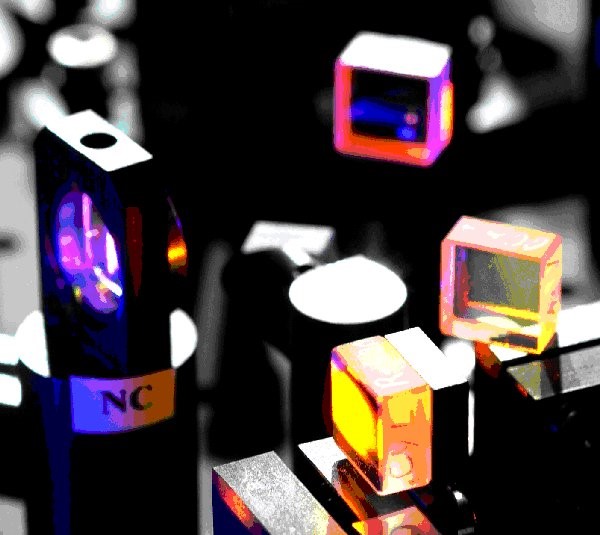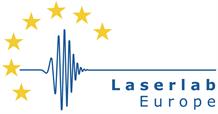LASERLAB-EUROPE is an "Integrated Infrastructure Initiative" or I3, which was launched in 2004. Its initial objectives included bringing together the high energy and the ultrafast laser communities as well as bringing laser laboratories from Eastern Europe (ELI project) closer to their counterparts in the West.
Two CEA laboratories are members of the I3:
- LIDYL1. Hosts the Saclay Laser-matter Interaction Center (SLIC), which develops and uses 4 intense femtosecond lasers and a large range of experimental end stations to study ultrafast phenomena and laser-matter interaction at high intensity and very short timescales. Research carried out at SLIC encompasses a broad spectrum of areas: development and applications of intense coherent femtosecond/attosecond XUV sources, laser-driven particle acceleration, laser-solid interaction at high intensity, femtochemistry, femtobiology, etc.
- CESTA2. Ensures the industrial architecture of the weapons of French deterrent forces and hosts the Megajoule Laser facility (LMJ), an essential tool for simulating the nuclear phase of weapon operation and for certifying the competence of the physicists responsible for designing the weapons.
What are LASERLAB-EUROPE’s objectives?
A crucial issue for Europe
Lasers and photonics are one of six key enabling technologies (KETs) identified by the European Union. KETs are not only essential for the future of science, but also substantially contribute to the EU member states’ economic growth, as they provide the basis for innovation in a range of products across all industrial sectors. They underpin the shift to a greener economy, are instrumental in modernising Europe’s industrial base and drive the development of entirely new industries. Their importance makes them a key element of European industrial policy.Laserlab currently offers international access to 22 infrastructures with 3 000 laser opening days over the course of project grant period. This makes for a broad range of virtual infrastructure, such as synchrotrons or other large instruments, as well as additional networking activities implemented, such as foresight activities and training schools.
Additionally, four Joint Research Activities (JRAs) are undertaken:
- biomedical optics for life science applications,
- innovative laser technologies,
- photonics for material analysis, nanoscience and sensing,
- high-energy particles and photon beams produced with lasers for industrial and societal applications.
An example of how basic research with ultrafast lasers reveals the nanoworld
Using XUV flashes of attosecond duration, researchers at LIDYL are able to study in real time the photoelectric effect, i.e., the ejection of electrons following photo-excitation of matter. This reveals the structure and dynamics of electrons, in particular their correlations that play a key role in the chemical bond. This paves the way for controlling chemical reactions for the production of new drugs, for example. Further experiments could make use of a newly developed technique called attosecond lighthouse, providing multiple attosecond pulses with perfect synchronization. Since 2004, thanks to LASERLAB-EUROPE, more than 1000 scientists from across Europe have had access to the most efficient laser infrastructure in Europe, making it possible to push back the limits of both scientific and technical knowledge in the field. Thus, "since the creation of Laserlab, CEA has been heavily involved in welcoming European scientists and has overseen coordination of this activity for all the consortium laboratories without interruption”, recalls Pascal D'Oliveira, in charge of Laserlab Access for the CEA-LIDYL. “Since 2004, we have hosted over fifty teams from Germany, England, Belgium, Denmark, Spain, Greece, Italy, Israel, Estonia, Poland and Portugal at our laser facilities in Saclay. "

Detail of the ATTOLAB laser, one of
the four laser chains of the LIDYL-SLIC. © Ph. Stroppa/CEA
Ultra-high intensity and very short pulse duration laser beams
1 LIDYL (UMR 9222) is a research laboratory associated with three bodies: CEA, CNRS and Paris Saclay University. It is hosted at the CEA-Iramis institute and its activities are focused on the fundamental processes involved in the interaction between radiation and matter.
The development of ultra-high intensity lasers (from tera (1012 W) to petawatt (1018 W), such as the CILEX-Apollon laser) with pulse duration on the femtosecond scale, draws significantly on this collaborative work. Thanks to these major technical breakthroughs, new physics and chemistry are emerging, such as attosecond physics or relativistic optics. It is now possible to film the rapidly evolving electron configuration during a chemical reaction, and even, potentially control some of them. According to Philippe Martin, Director of LIDYL: "Research on laser-matter interaction with femtosecond lasers gave rise to two scientific communities The first has focused on the race to ultra-high luminous intensities and the acceleration of electrons or protons, which is very promising for radio or proton therapy and for research in the field of physics. It produces completely new laser-plasma interactions, which we are beginning to explore. The second community has focused more on reducing the pulse durations to the attosecond range by generating XUV radiation (harmonics) in gas and plasmas. It is the best way to explore the dynamics of electrons, which is a fundamental issue in solid state physics, chemistry or biochemistry.” All these main topics are present within LIDYL-SLIC, which is looking to develop societal applications with industrialists established on several international markets.
 About LASERLAB-EUROPE:
About LASERLAB-EUROPE:
LASERLAB-EUROPE was funded by the EU from 2004 to 2015, under different schemes, for a total amount of 33 M€ and is today successfully continuing as an "Integrating Activity" under the H2020 European infrastructure program (2015-2019). From 18 partners in 11 countries, the consortium, presently coordinated by Lund University (Sweden), has expanded to reach48 participants from 21 countries. Beyond 2019, the partners are looking forward to a new organizational structure, such as a European Research Infrastructure Consortium (ERIC), a European legal instrument set up to facilitate the establishment and the operation of large European research infrastructure projects by several Member States and associated countries.